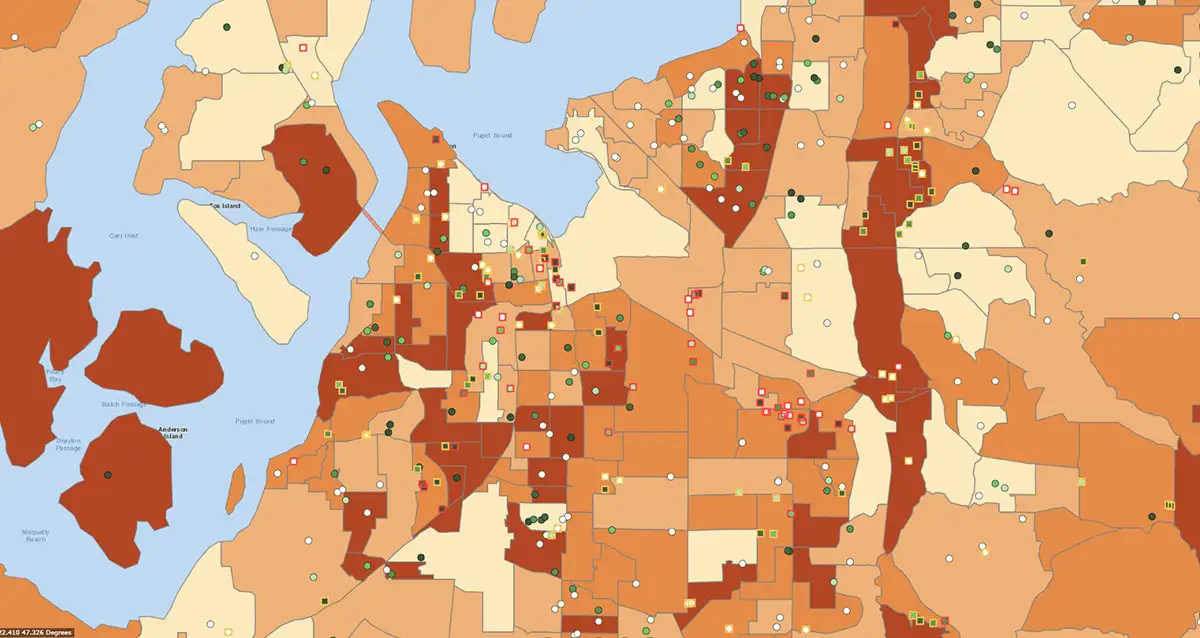A confluence of circumstances is aligning to put more older US residents at risk of suffering and dying from extreme weather. Climate-related extreme weather events are increasing in frequency and severity just as the number of people most vulnerable to extreme weather is expanding rapidly. This concern is compounded by the fact that those who are 65 years and older tend to concentrate in regions most susceptible to extreme weather. Policymakers and emergency management professionals need to plan for the growing and particular needs of this segment of the population in order to save lives.
I led a team of CNA analysts that conducted a risk mapping and geospatial analysis to examine this issue. Our CNA report, The Impacts of Extreme Weather on Older Adults, examines how weather events affect the health, housing, and economic security of older residents in Arizona, California, Florida, and Missouri. We found a connection between the counties where climate-related extreme weather events occur and where older adults are concentrated. Our study also identified three policy issues:
- Despite the dangers of extreme heat on older adults, it is not listed as a qualifying event in the statutory definition of major disasters.
- Multiple factors disincentivize older adults from making home improvements to prepare for extreme weather.
- Emergency management agencies could better identify the distinct needs of older adults for more inclusive disaster planning.
Growing Older Populations and High-Risk Counties
There are now more people over 65 than at any point in history, and the number of older adults in the US is projected to nearly double from 56 million in 2020 to between 95 and 98 million in 2060. If current trends continue, these growing numbers will tend to be concentrated in counties at high risk of natural disasters. For example, according to the Federal Emergency Management Agency, counties along the Gulf Coast and southern Atlantic Coast—popular with retirees—are at the highest risk of natural hazards. The Villages, Florida, had both the fastest growth of any US metropolitan area between 2010 and 2020 and the oldest median age. In terms of readiness to protect residents from the health effects of climate change, other research shows Southern Florida has no counties categorized below moderate risk. During Florida’s Hurricane Ian in 2022, two-thirds of deaths were people age 65 and older. Households with older adults are more likely to lack transportation and face other barriers to evacuation.
In California, several counties with high wildfire risk are also home to older populations. The physical limitations of advanced age make it more difficult to escape disaster and also increase sensitivity to smoke inhalation. The US Fire Administration estimates that older adults are more than twice as likely than the general population to die in fires. Following the 2018 Camp Fire in and around Paradise, California, 53 of the 69 bodies that were positively identified were over the age of 65.
Why Older People Are Vulnerable to Extreme Heat
Extreme heat is the number one weather-related cause of death in the United States. It kills more people than hurricanes, floods, and tornadoes combined. Older adults, who have a higher incidence of cardiovascular and respiratory disorders, are particularly at risk. In July 2023, my own city of Phoenix, Arizona, broke extreme heat records with temperatures of 110 degrees or higher for 31 days in a row. Maricopa County, which includes Phoenix, has reported 579 heat-associated deaths, with a further 56 under investigation. And 61 percent of those deaths were people 50 and older—with more than half of those being 65 and older.
The housing situations of older adults contribute to the risks they face from extreme weather. They tend to have lived in their homes longer and have older homes, which may require maintenance and may lack modern climate-related features. Economic factors such as fixed incomes may prohibit them from making home improvements to meet modern standards and prepare for extreme weather. Of the heat-associated indoor deaths in Maricopa County in 2023, 85 percent were in homes with nonfunctioning air conditioners.
Despite the dangers of extreme heat on older adults, heat risks to human health are not often prioritized in climate mitigation and disaster plans. Extreme heat is not listed as a qualifying event in the statutory definition of major disasters, and communities may not be eligible for federal government assistance.
Older Adults Have Distinct Needs During Disasters
Older adults have distinct needs that should be considered but are often left out of disaster planning. The new CNA report includes 30 findings and 36 recommendations for federal, state, and local government emergency management agencies. Emergency management plans should include tailored interventions to support older adults. Older adults may need accommodations such as wheelchair-accessible vehicles and shelters, access to medication, or sign language services. Those who live alone and are electricity dependent have particular needs. For example, during a power outage, electrically powered assistive technology like ventilators and oxygen may not function properly.
The National Preparedness System is built around a whole-community approach to planning and preparedness. For effective planning, emergency management agencies must ensure they involve and plan with communities, not for them. And this includes older adults. Some state plans, such as the 2023 Missouri State Hazard Mitigation Plan, recommend including members of communities at greatest risk in planning and decision-making. But some other state plans do not mention older adults. States could move in the right direction by increasing investment in disaster research and technical assistance, reviewing accessibility compliance, and allocating funding to focus on gaps in response efforts for the aging and disability communities. The demographic trends and the changing climate make it clear that the time to prepare to protect vulnerable populations is now.



